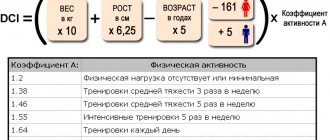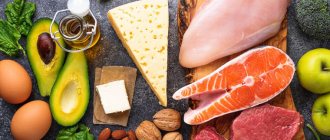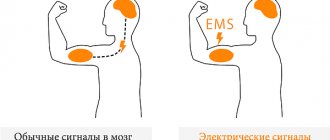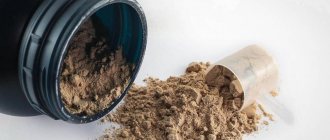The Warrior Diet is a way of eating that involves alternating long periods of eating small amounts of food with short periods of overeating. This diet is touted as an effective way to lose weight, improve energy levels and improve mental clarity.
However, some health experts argue that this method of fasting is an unnecessary extreme.
This article discusses everything you need to know about the Warrior Diet to help you determine if it is a safe and effective way to improve your health.
What is the Warrior Diet?
The Warrior Diet was developed in 2001 by Ori Hofmekler, a former member of the Israeli special forces who moved into the field of fitness and nutrition.
This diet is considered a type of intermittent fasting, an umbrella term for an eating pattern that involves periods of reduced caloric intake over a period of time.
The Warrior Diet is based on the eating patterns of ancient warriors, who consumed little food during the day and then feasted at night.
According to its founder, it aims to “improve the way we eat, feel, perform and look” by stressing the body by reducing food intake, thereby triggering “survival instincts.”
It should be noted that Ori Hofmekler himself admits that the Warrior Diet is based on his own beliefs and observations - not strictly on science.
People following this diet fast for 20 hours a day, then eat as much food as they want at night.
During the 20-hour fasting period, dieters are advised to consume small amounts of dairy products, hard-boiled eggs, raw fruits and vegetables, and plenty of non-caloric liquids.
After 20 hours, people can eat any foods they want during the four-hour binge eating window.
However, eating only unprocessed, whole and organic foods that are healthy is encouraged.
To begin the diet, it is highly recommended to follow the initial three-week plan, divided into stages, which will be discussed in detail later in this article.
Followers of the Warrior Diet claim that this method of eating helps eliminate excess body fat, improves concentration, increases energy levels and stimulates cellular repair.
Summary:
The Warrior Diet is a type of intermittent fasting that revolves around 20-hour periods of undereating followed by four-hour periods of overeating.
Is the Warrior Diet good for the body?
The Warrior Diet is not backed by any research, but intermittent fasting is.
While the Warrior Diet is a little more extreme than other, more common types of intermittent fasting, such as the 16:8 diet (fasting for 16 hours and then eating for the remaining 8 hours), it is simply a stricter version of this method.
For this reason, it can be argued that the benefits associated with intermittent fasting also apply to the Warrior Diet.
It can help you lose weight
Various intermittent fasting methods, including 20-hour fasting cycles, have been associated with weight loss.
One study, which used an eating pattern closely similar to the Warrior Diet (fasting for 20 hours), found that people who ate within a four-hour period in the evening experienced greater weight loss than those who consumed the same number of calories during meals. during the day.
Moreover, those who ate one meal per day experienced a significant decrease in fat mass and greater muscle mass ().
A recent review of six studies concluded that different types of intermittent fasting, ranging from 3 to 12 months, were more effective in reducing weight loss than no dietary intervention.
However, the review found that there were no significant differences in weight loss between people on an intermittent fasting diet and people on a continuous calorie restriction (normal diet). This means that calorie restriction without periods of fasting was equally effective ().
Additionally, although a reduction in calorie intake is the most pronounced result of the Warrior Diet, some people following this eating pattern may technically consume too many calories during the four-hour binge period and experience weight gain.
Fasting may improve brain health
There are claims that the Warrior Diet is a good way to improve brain health.
This may be true to some extent, based on scientific research on intermittent fasting.
Intermittent fasting has been found to help regulate inflammatory pathways that affect your brain function.
For example, animal studies have shown that intermittent fasting reduces inflammatory markers such as interleukin 6 (IL-6) and tumor necrosis factor alpha (TNF-α), which can negatively impact memory and learning ().
Other animal studies have shown that intermittent fasting has a protective effect against Alzheimer's disease (, ).
However, research in this area is ongoing, and human studies are needed to determine the beneficial effects of intermittent fasting on brain health.
May reduce inflammation
Inflammation caused by oxidative stress is believed to be a cause of many diseases, such as cardiovascular disease, diabetes and some types of cancer ().
Research has shown that intermittent fasting can be an effective way to reduce inflammation in your body.
One study of 34 healthy men found that the 16:8 intermittent fasting method reduced levels of TNF-α and interleukin 1 beta (IL-1β), substances that promote inflammation ().
Another study of 50 people found that those who fasted during the Muslim holiday of Ramadan had significantly lower levels of the inflammatory markers IL-6, C-reactive protein (CRP) and homocysteine compared to people who did not fast () .
Fasting may improve blood sugar control
Some studies have shown that intermittent fasting may improve blood sugar control in patients with type 2 diabetes.
A study of 10 people with type 2 diabetes found that fasting for 18 to 20 hours a day resulted in significant weight loss and significantly improved fasting and postprandial blood sugar control ().
However, another recent study found that intermittent fasting increased the risk of hypoglycemia (low blood sugar) even when taking lower doses of blood sugar-lowering medications ().
Although lowering your blood sugar safely is beneficial, hypoglycemia can be dangerous and can lead to serious complications ().
For this reason, people with diabetes who are interested in trying intermittent fasting should first consult their doctor.
Summary:
Intermittent fasting methods such as the Warrior Diet can help you lose weight, improve brain health, lower blood sugar and reduce inflammation.
Results of practical experiments
In order to better introduce and familiarize readers with the system of intermittent fasting, we present data from practical experiments conducted by Dr. John M. Berardi, Drs. Christy Scott-Dixon and Nate Green using a real male participant aged 37 years, height 173 cm and weight 86 kg , with a body fat percentage of 10%.
His athletic results: bench press - 160 kg, deadlift - 205 kg, vertical jump - 81 cm, run 36.6 meters - 4.9 seconds.
The subject's goals were:
- improving your speed and strength performance,
- getting rid of 6-9 kg of body weight (mainly due to fat deposits),
- preservation of muscle mass,
- improving overall health.
It should be noted that the subject is a healthy man, a fitness trainer, with 20 years of experience in proper nutrition and training.
Experiment #1: 36-hour fast once a week
At this stage of the experiment, fasting was carried out once a week - on Sunday.
On weekdays from Monday to Friday, the calorie content of the diet decreased by 500 kcal from the usual diet and amounted to 2500 kcal per day. On Saturday, the calorie content of the diet increased sharply and was practically not limited (about 5000-6000 kcal for 5 meals). But before each meal, the subject performed 100 push-ups, since he believed that the pectoral muscles lag behind other muscle groups in development.
During the week (from Monday to Friday), the diet consisted of only protein and low-carbohydrate foods: meat, fish, vegetables, legumes, nuts. Every day, the subject took 1 tablet of multivitamins, 4000 IU of vitamin D, 1 tablespoon of fish oil and 10 grams of BCAAs before training.
On Saturday, the subject ate foods rich in carbohydrates without any special restrictions and stopped eating at 22:00 until 10:00 am on Monday (36 hours of fasting).
The subject trained 5 times a week according to the following scheme:
| Day of the week | Type of load | Duration of training |
| Monday | upper body strength training | 45 minutes |
| Tuesday | running (sprints) | 10 minutes |
| Wednesday | upper body circuit training | 45 minutes |
| Thursday | running (sprints) | 10 minutes |
| Friday | lower body strength training | 45 minutes |
Over 8 weeks, the experiment participant lost 5.5 kg in weight. The first 2 kg were lost in the first week, then the body lost mostly fluid. Further, weight loss stabilized at 500-900 grams per week.
About 60% of the lost body weight was fat, 40% was dry mass, but the subject, based on his own condition and strength indicators, is inclined to the version that 40% of the mass is water, since a large amount of protein consumed for 6 days a week, was sufficient to maintain muscle mass. Strength indicators have not changed. The subject's weight was 81 kg.
conclusions
- A 36-hour fast once a week brings good results, but weight loss occurs at the same rate as with a low-calorie diet.
- My health and overall fitness were better than with a regular low-calorie diet.
- Overall body composition, strength and speed indicators have improved.
Experiment #2: Fasting 2 days a week
The next experiment with fasting 2 days a week was carried out immediately after the first. Since the weight loss had noticeably decreased, the fasting program required more drastic measures.
Typically, when the weight loss process slows down, it is recommended to increase physical activity by 30 minutes a day, or reduce the total calorie content of the daily diet by 200 kcal.
But in order to continue the research, a more radical path was chosen - 2 fasting days a week.
The diet and training regimens remained the same, the only change was that the subject now fasted on Wednesday and Sunday.
This fasting/eating regimen led to the loss of another 3.5 kg of body weight, 2 kg of which was muscle mass. The experiment participant felt extremely exhausted and weakened. Body weight was 77.5 kg.
Next, it was decided to revise the fasting scheme and add a high-calorie meal on Tuesday (5000 kcal per day) before the fast on Wednesday (5000 kcal per day) for up to 22 hours with 100 push-ups before each meal.
Body weight did not change, but stabilized at the level of 77.5 kg. Nevertheless, his health improved, but his tolerance to days without food became worse - the subject was constantly waiting for high-calorie days.
conclusions
- The 2-day fasting scheme was not subjectively suitable for our participant in the experiment.
- If the 1 fast day per week regimen has stopped producing results, do not change your fasting regimen abruptly or make radical changes. It is possible that increasing low-intensity physical activity (such as walking or slow running) by 30 minutes a day will produce good results.
Experiment No. 3: 16/8 fasting
Every day the subject fasted from 21:00 in the evening until 13:00 the next day. At the same time, he got up at 8 a.m., then at 9 and 11 a.m. he drank green tea, and at 12 p.m. he trained (during which he was allowed to consume 10 grams of BCAAs). At 13:30, 16:30 and 20:30 – the subject ate food. Before each meal – 100 push-ups. And from 21 pm I was starving.
The training scheme generally remained the same. The total daily calorie content on Monday and Friday was 3200 kcal. And on other days – 2200 kcal. On days with low physical activity, the participants were expected to eat a low-carbohydrate diet.
During the first 4 weeks, the subject’s body weight increased by 2 kg and amounted to 79.5 kg. A general assessment of the physique allowed us to conclude that the main gain came from the muscles, since due to the increased consumption of carbohydrates (compared to the previous scheme), the muscles were filled with glycogen and water.
However, in the first two weeks, all signs of deterioration were observed: constant bouts of hunger, low mental concentration, mood swings in the first half of the day (up to 13 hours). Sometimes after waking up and before the training itself (from 8 am to 1 pm), the subject could not concentrate on his work, and sometimes his speech became very slow, excessive irritability appeared over trifles and an inadequate reaction to harmless comments. This led to the conclusion that there was a loss of emotional stability during the first two weeks of intermittent fasting.
Two weeks before the start of the first stage of this experiment, the emotional state and general well-being improved and stabilized. The new lifestyle and diet no longer created inconvenience for the subject. Moreover, the subject began to notice a certain muscle fullness (although his body weight increased by no more than 2 kilograms), and his body began to look more athletic compared to the previous two weeks after the start of the experiment.
conclusions
- The subject was suitable for the intermittent fasting scheme - 16/8, but with minor individual adjustments.
- The first 2 weeks of adaptation of the experiment were especially difficult.
- Well-being worsened when body weight was below 77.5 kg, and the body began to reduce the level of physical daily activity, apathy towards training and general fatigue were felt.
- In the future, it is advisable for the subject to adhere to a daily caloric intake of 2500 kcal. On days with intense training, you can consume up to 3200 kcal.
General results of the study
Summarizing the overall result of the study using different intermittent fasting schemes, we get the following result:
- The body weight of the subject at the end of the experiment was 78 kg (i.e., decreased by 8 kg).
- The percentage of subcutaneous fat is 6% (decreased by 4%).
- The weight remained for 4 months in the range of 77-78.5 kg.
- Testosterone level – 23.8 mmol/l (decreased by 5 units).
- Thyrotropin level is 1.21 mlU/l (decreased by 0.4 units).
- Hemoglobin level – 140 g/l (decreased by 14 units).
- The number of red blood cells, white blood cells and platelets in the blood has decreased.
- Total blood lipid levels (total cholesterol, triglycerides, and low- and high-density lipids) increased. This is a negative consequence that could well be caused by increased consumption of meat and fatty foods on fast-food days along with reduced carbohydrate intake. To prevent this phenomenon, more fresh vegetables and fiber should be added to the diet and the amount of fatty foods should be reduced.
- The total level of thyrotropin and testosterone in the blood remained within normal limits, but decreased. This decrease is typical for men following a low-calorie, carbohydrate-deficient diet.
Potential harms of the Warrior Diet
Despite the potential health benefits of the Warrior Diet, there are some problems that this way of eating can cause.
Some people find it difficult to stick to this diet
One of the most obvious limitations of the Warrior Diet is that it limits the time you can eat main meals to a four-hour period.
You may find it difficult to stick to this eating routine, especially if you participate in regular social events such as social breakfasts or lunches.
While some people may feel great eating very few calories over a 20-hour period, others may find that this way of eating is not ideal for their lifestyle.
The Warrior Diet Isn't Suitable for Many People
The Warrior Diet is not a way of eating that all people should follow.
This type of intermittent fasting is unacceptable for many people, including:
- Children
- Women who are pregnant or breastfeeding
- People with medical conditions such as type 1 diabetes, heart failure, or certain types of cancer
- Extreme athletes
- People with eating disorders or people who have had eating disorders in the past
- People who are underweight
In fact, some studies suggest that intermittent fasting may affect women's hormones more than men's (, ).
Some women can do intermittent fasting without negative effects. However, some may experience unpleasant side effects such as insomnia, anxiety, irregular periods and reproductive health problems.
The Warrior Diet May Lead to Eating Disorders
The Warrior Diet focuses on overeating, which can cause problems for many people.
Although Ori Hofmekler states that you should stop eating "when you feel pleasantly satisfied," this may not translate into healthy eating practices for everyone.
The Warrior Diet may lead to uncontrollable binge eating and conscious purging of the stomach through induced vomiting, especially in people at risk of developing an eating disorder.
Eating large amounts of food disorderly can also lead to feelings of regret and shame, which can negatively impact mental health and body image.
The Warrior Diet May Cause Negative Side Effects
The Warrior Diet may cause side effects, some of which can be serious.
Potential side effects include ():
- Fatigue
- Dizziness
- Low energy level
- Anxiety
- Insomnia
- Very strong hunger
- Low blood sugar (hypoglycemia)
- Constipation
- Fainting
- Irritability
- Hormonal imbalance
- Weight gain
Additionally, many health experts argue that people on the Warrior Diet are unable to obtain enough nutrients while doing intermittent fasting.
However, with proper dietary planning and a diet that includes only healthy, nutrient-dense foods, nutrient and calorie needs can be met.
Summary:
The Warrior Diet is not suitable for many people, as people may find it difficult to stick to this eating plan. Plus, it can lead to negative side effects such as fatigue, insomnia, and hormonal imbalance.
How to Follow the Warrior Diet
Hofmekler suggests that anyone starting the Warrior Diet should follow the initial three-week, three-phase plan to "improve the body's ability to use fat for energy."
Phase I (first week): “Detox”
- During the 20 hours of daily fasting, you must consume vegetable juices, pure broth, dairy products (yogurt, cottage cheese), hard-boiled eggs, raw fruits and vegetables.
- During the four-hour binge period, eat a salad with oil and vinegar dressing, followed by one large or multiple meal consisting of plant proteins (legumes), whole grains (no wheat), some cheese, and cooked vegetables.
- Coffee, black tea, water and small amounts of milk can be consumed throughout the day.
Phase II (second week): "Lots of fat"
- During the 20 hours of daily fasting, you must consume vegetable juices, pure broth, dairy products (yogurt, cottage cheese), hard-boiled eggs, raw fruits and vegetables.
- During your four-hour binge period in the evening, eat a salad with oil and vinegar, followed by lean animal protein, cooked vegetables and at least one handful of nuts.
- No grains or starches are consumed during phase II.
Phase III (third week): "Final fat loss"
This phase of the cycle is between periods of high carbohydrate intake and high protein intake.
- 1-2 days of high carbohydrate intake
- 1-2 days of high protein and low carbohydrate intake
- 1-2 days of high carbohydrate intake
- 1-2 days of high protein and low carbohydrate intake
On high carb days:
- During the day, vegetable juices, pure broth, dairy products (yogurt, cottage cheese), hard-boiled eggs, raw fruits and vegetables should be consumed during the 20 hours of fasting.
- During the four-hour binge period, eat a salad with vegetable oil and vinegar, followed by cooked vegetables, a small amount of animal protein and one staple carbohydrate such as corn, potatoes, pasta, barley or oats.
On high protein/low carb days:
- During the day, vegetable juices, pure broth, dairy products (yogurt, cottage cheese), hard-boiled eggs, raw fruits and vegetables should be consumed during the 20 hours of fasting.
- During the four-hour binge period in the evening, eat a salad with vegetable oil and vinegar, followed by 230-450 grams of animal protein with cooked, non-starchy vegetables.
- Although grains or starches should not be consumed during the four-hour phase III binge period, small amounts of fresh tropical fruit can be eaten for dessert.
Hofmekler recommends that after you have completed the three phases of the Warrior Diet, you should start from the beginning.
However, instead of going through the entire cycle again, you can also skip the initial phases and simply follow the recommendations of fasting for 20 hours on low-calorie foods and then eating healthy, protein-rich foods to meet your needs during the binge phase.
Please note that portion sizes on the Warrior Diet are unclear and there are no calorie intake restrictions.
Hofmekler recommends taking a daily multivitamin along with other supplements such as probiotics and amino acids as part of this diet plan.
People on this diet are also advised to drink enough water and incorporate exercise into their daily routine, including strength and speed training. This promotes the loss of body fat mass.
Summary:
When starting the Warrior Diet, beginners are advised to follow three separate phases, divided into weeks, which include fasting during the day and binge eating at night.
Autophagy as a result of fasting
Speaking about periodic fasting as a process extremely beneficial for humans, one cannot fail to mention the main reason why hunger is so important and necessary for the human body - cellular autophagy.
In 2020, Japanese molecular biologist Yoshinori Ohsumi received the Nobel Prize in Medicine or Physiology for his discovery of the mechanism of cell autophagy. This phenomenon has been known in scientific circles since the 60s of the twentieth century, but it has been studied extremely superficially.
Dr. Ohsumi's research allowed us to look at the processes of autophagy in more detail and comprehensively, fully confirming the need for fasting in order to strengthen and heal the body at the cellular level. This event stirred up unprecedented public interest in the issue of intermittent and therapeutic fasting.
Autophagy is translated from Greek as “self-eating.” This is a process aimed at destroying protein and internal components (organelles) of the cell under conditions of nutrient deficiency in order to reuse them for energy.
Currently, there are three types of autophagy:
- microautophagy,
- macroautophagy,
- chaperone autophagy.
Microautophagy
Microautophagy is aimed at capturing macromolecules and fragments of cellular structures by lysosomes (cell organelles with an acidic environment, responsible for the digestion process in the cell). This process is activated by protein digestion under conditions of energy or building material deficiency in the cell. However, the process of cellular microautophagy is highly indiscriminate and can occur under normal conditions – outside of nutrient deprivation. For example, there are known cases of partial microautophagy of the cell nucleus in yeast without loss of cell viability.
Macroautophagy
The process of macroautophagy occurs as follows. Part of the cytoplasm containing some of the cell's organelles is separated by a double cell membrane and forms an autophagosome. Autophagosomes then combine with lysosomes and are digested inside the cell. Thanks to this process, the cell gets rid of obsolete or damaged organelles.
Chaperone autophagy
Chaperone autophagy occurs as a result of stress, for example, during prolonged fasting or increased physical activity. With this type of autophagy, partially destroyed protein enters the lysosome cavity and is digested there. This type of autophagy is characteristic only of mammals.
Thus, autophagy is a natural way of ridding cells of unnecessary and “obsolete” organelles, as well as a means of renewing the body as a whole.
What to eat and what to avoid
Although people on this diet are allowed to consume any food they like, whole, nutrient-rich organic foods are encouraged, while processed foods, preservatives, added sugars and artificial sweeteners should be avoided.
Foods eaten in small portions during the 20 hour fasting phase:
- Fruits : apples, bananas, kiwi, mango, peach, pineapple, etc.
- Vegetable juices : beets, carrots, celery, etc.
- Broth : chicken, beef, etc.
- Raw vegetables : green leafy vegetables, carrots, peppers, mushrooms, onions, etc.
- Seasonings : a small amount of olive oil, apple cider vinegar, etc.
- Dairy products : milk, yogurt, cottage cheese, etc.
- Protein : Hard-boiled or poached eggs.
- Drinks : water, coffee, tea, etc.
During the overeating phase, the following foods should be included in the menu:
- Cooked vegetables : cauliflower, Brussels sprouts, zucchini, green leafy vegetables, etc.
- Protein : chicken, animal meat, fish, turkey, eggs, etc.
- Starches : beans, potatoes, corn, sweet potatoes, etc.
- Grains : oats, quinoa, pasta, bread, barley, etc.
- Dairy products : milk, cheese, yogurt, etc.
- Fats : nuts, olive oil, etc.
Foods to avoid:
- Candies
- Cookies and cakes
- Potato chips
- Fast food
- fried food
- Processed meats (sausages, factory-made bacon, prepared foods)
- Refined carbohydrates
- Artificial sweeteners
- Sweetened drinks such as fruit juice and sodas
Summary:
The Warrior Diet encourages nutrient-dense foods such as vegetables, fruits, and lean protein. Processed foods and added sweeteners should be avoided.
Summarize
- The Warrior Diet is a form of intermittent fasting that involves alternating periods of 20 hours of eating small amounts of food with four hours of periods of overeating.
- While there is little research to support the benefits of this specific type of fasting, intermittent fasting in general has been associated with a number of health benefits, ranging from weight loss to improved brain health.
- While some people may experience great effects on the Warrior Diet, others may struggle with the specifics of this eating plan.
- Additionally, this way of eating is not suitable for many people, including pregnant women and children.
- While the Warrior Diet may benefit some people, the tried and true method of eating healthy, increasing physical activity, and limiting calorie intake is something that anyone can follow.
Tags: Intermittent fasting
- Related Posts
- 1200 Calorie A Day Diet Review: Is It Worth Following?
- 7 best types of protein for weight loss
- Diet for 2000 calories per day: products, menu
« Previous entry
Advice for athletes
Don't exceed your overall stress level.
Any diet, and especially hunger, is a serious physiological stress for the body. Try to take into account the general level of stress during fasting due to illness, everyday problems and training - without exceeding acceptable limits. If you feel unwell physically or mentally, just rest and skip the workout.
If fasting gives good results, do not overdo it.
Try to keep fasting periods manageable, short, and intermittent. Do not practice intermittent fasting for more than 4-5 months. Be sure to take breaks.
Make your workouts easier.
If you follow a fasting scheme with a restriction of the total calorie intake on days with meals, your body experiences an acute energy deficit, so training during this period should be carried out in a gentle manner.
- Strength training – no more than 3-4 hours per week.
- Interval (circuit) training – no more than 2-3 short sessions per week.
- Cardio training (only if necessary) – no more than 1-2 hours per week.
Find the optimal combination.
In contrast, long-term, low-intensity training pairs well with many intermittent fasting regimens. If you want to qualitatively transform your body and reduce the amount of subcutaneous fat, you need to increase the amount of daily physical activity.
Don't be fooled!
Don't expect to lose weight if you just skip breakfast and eat as usual the rest of the time. Intermittent fasting is complete control over the consumption of nutrients (proteins, fats, carbohydrates), careful selection of foods and mandatory training on an empty stomach.
Attention CrossFitters: You should pay special attention to the use of intermittent fasting for weight loss or mass gain. Since high-intensity training to develop endurance and strength is completely incompatible with fasting and can harm the body!











